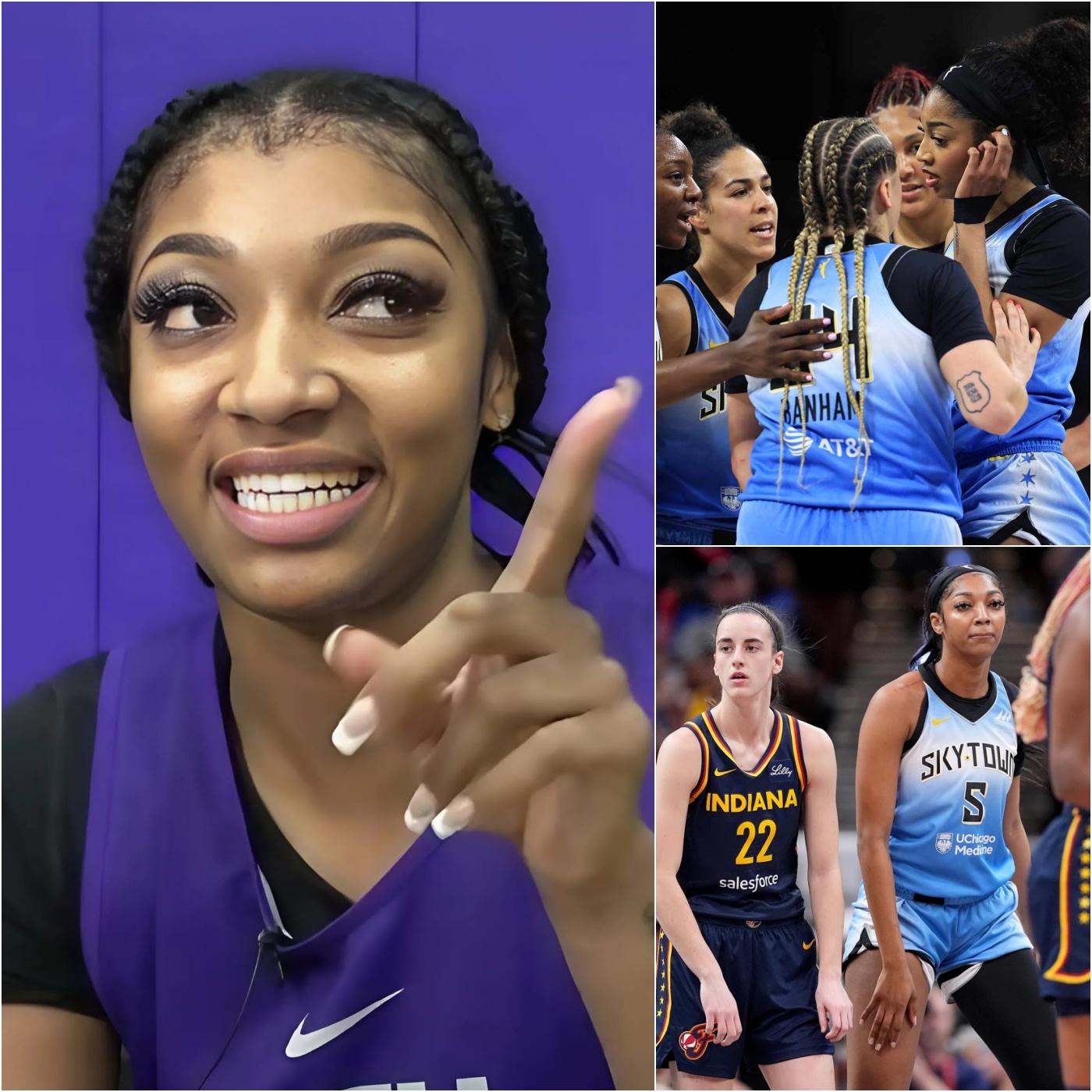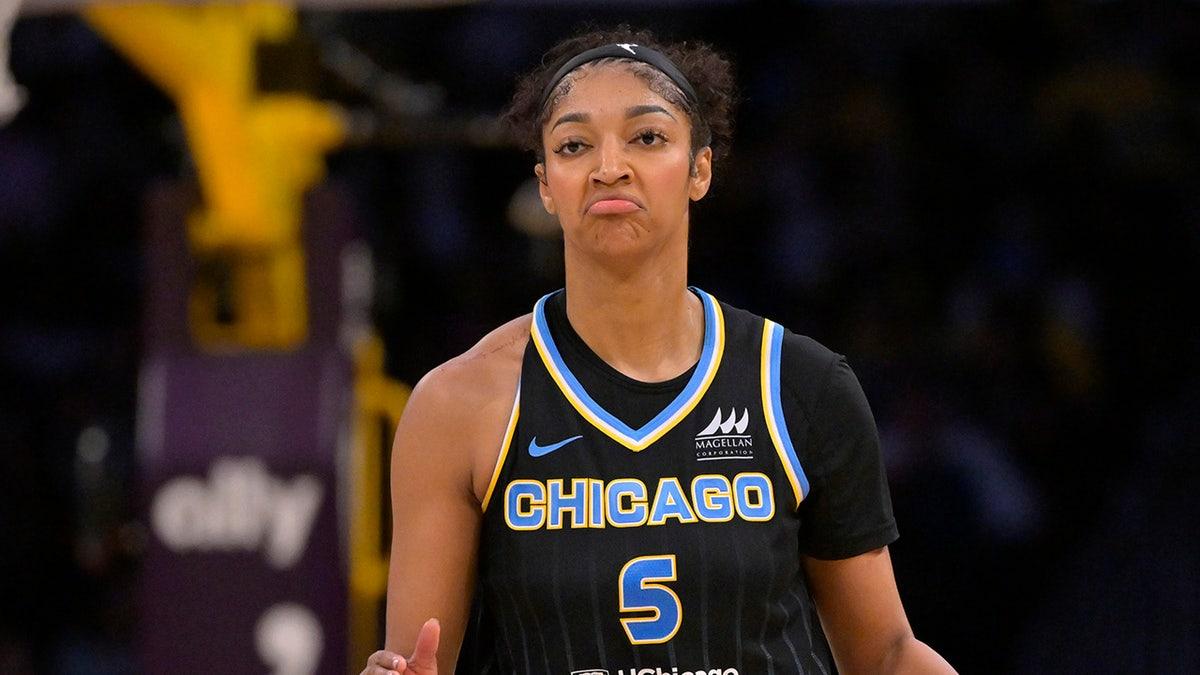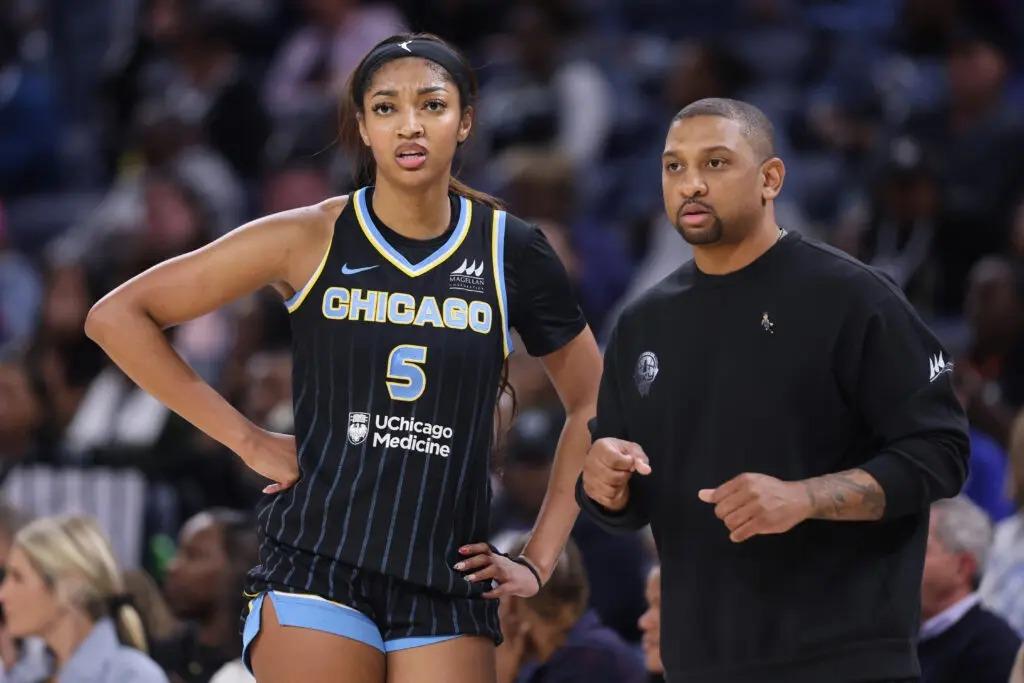In the high-stakes world of professional basketball, where every crossover dribble and alley-oop dunk captures millions of eyes, a stark reality lingers off the court. Angel Reese, the Chicago Sky forward whose relentless energy and unapologetic flair have redefined stardom in women’s hoops, has stepped into the spotlight not for her double-doubles, but for a bolder call to action. On a crisp October evening in 2025, amid the buzz of the WNBA playoffs winding down, Reese declared in a candid interview with ESPN: “Female players deserve salaries on par with their NBA counterparts.” Her words, delivered with the same fire she brings to the paint, have rippled through locker rooms, boardrooms, and social media feeds, reigniting a conversation about equity that feels both urgent and long overdue. What if the women lighting up arenas from Chicago to Las Vegas were finally compensated like the legends they are? Reese’s stance isn’t just a plea—it’s a spark that could reshape the league’s financial future.

Reese’s voice carries weight because it’s forged in the trenches of the game. Drafted seventh overall in 2023 out of LSU, where she led the Tigers to an NCAA championship and became a household name for her trash-talking tenacity, she entered the WNBA as a rookie sensation. Her second season in 2025 saw her averaging 13.6 points and 10.1 rebounds per game, anchoring the Sky’s playoff push despite injuries plaguing the roster. Yet, behind the stats lies a paycheck that barely covers the basics. Reese earns roughly $70,000 annually, a figure she revealed earlier this year as “barely enough to make ends meet,” according to a Berkeley Economic Review analysis. That’s the reality for many in the league: scraping by on salaries that force top talents to play overseas during the offseason, enduring grueling travel and cultural adjustments just to afford stability. Reese’s frustration isn’t isolated; it’s the undercurrent of a league exploding in popularity but lagging in prosperity. Imagine the intrigue—what untapped potential lies in a WNBA where stars like Reese could focus solely on dominating their home courts, free from the exhaustion of global hustles?
The numbers paint a picture of disparity that’s impossible to ignore. In 2025, the average WNBA salary hovers around $102,249, with the league’s supermax capping out at $249,244 for veterans like Jackie Young or Jewell Loyd. Contrast that with the NBA, where the average paycheck swells to nearly $14 million, and rookies like Victor Wembanyama command $12 million in their debut year. The gap widens further when you zoom out: the NBA’s salary cap sits at $140.5 million per team, while the WNBA’s is a mere $1.3 million—meaning one NBA minimum contract ($1.1 million) nearly matches an entire WNBA roster’s spending limit. Revenue tells the tale of why. The NBA rakes in over $10 billion annually, fueled by 82-game seasons, global merchandising empires, and broadcast deals worth billions. The WNBA, playing a condensed 40-game slate, generated about $200 million in 2023, though that’s doubled in recent years thanks to surging attendance and viewership. Players receive just 9-10% of that pie, compared to the NBA’s 50% split—a structural imbalance that Reese and her peers are now challenging head-on.

This push for parity isn’t happening in a vacuum. The WNBA’s 2025 season has been a breakout year, with record-breaking metrics that hint at a tipping point. Viewership hit 54 million unique fans in 2024, spilling into 2025 with sold-out arenas and jerseys flying off shelves. The All-Star Game in Phoenix became a protest podium, where players donned T-shirts emblazoned with “Pay Us What You Owe Us,” a unified front that went viral and amplified the labor talks underway. Negotiations for a new collective bargaining agreement (CBA), set to conclude by November 2025, are heating up. The players’ union opted out of the 2020 deal, demanding better revenue shares, roster spots, and long-term security. Looming larger is the league’s media rights package, expiring in 2025 and projected to balloon from $60 million to $200 million annually as part of a joint NBA-WNBA bundle with Disney, NBC, and Amazon. If leveraged right, this influx could triple the salary cap by 2026, potentially minting the WNBA’s first million-dollar contracts. Reese’s timing is impeccable; her words arrive as the league stands on the cusp of transformation, whispering a tantalizing question: Could 2026 be the year women’s basketball catches up?
Reese isn’t shouting into the void alone. Fellow stars have echoed her sentiment, weaving a tapestry of advocacy that’s as compelling as any championship run. A’ja Wilson, the Las Vegas Aces powerhouse and two-time MVP, has been a vocal architect of change. At the Time100 Gala in April 2024, amid celebrations of her on-court dominance—where she became the first player to score 1,000 points in a regular season—Wilson addressed the rookie pay uproar surrounding Caitlin Clark. “It’s been like that for years,” she told TODAY.com, her tone steady yet charged. “Now, it’s just up to us to continue to have a voice, and continue to have people invested in us and want to be real and take care of us as players, as athletes, and then we go from there.” Wilson’s own salary, a modest $200,000 in 2025 despite her $4 million net worth largely from endorsements, underscores the irony: she’s the league’s best player, yet her base pay wouldn’t cover a fraction of LeBron James’s sneaker deal. Her advocacy extends beyond words; as a union leader, she’s pushed for charter flights and marketing bonuses that could add $500,000 to top earners under the current CBA. Wilson’s vision? A league where talent, not gender, dictates dollars—a future where her 26.9 points and 11.9 rebounds translate to the financial freedom she deserves.

Then there’s Caitlin Clark, the Indiana Fever phenom whose logo threes and no-look passes have turned casual fans into die-hards. Clark’s rookie salary of $76,535 in 2024 sparked outrage, a paltry sum next to the $55 million her NBA draft counterpart pocketed. By 2025, entering her second year at $78,066, she didn’t shy from the fight. After winning the Commissioner’s Cup in July—a tournament payout eclipsing Finals winnings—Clark seized the moment on a teammate’s Instagram Live: “You get more for this than you do if you’re the champion. It makes no sense. Help us out.” Her agent, Erin Kane, amplified the call in February, telling ESPN, “It’s not possible to fully compensate Caitlin for what she has meant to the WNBA… They all need to be paid more. She should be recognized for what she has done and what she’s brought to the league from an economic standpoint.” Clark’s impact is seismic: Fever ticket sales skyrocketed, franchise values jumped 273% since her arrival, and her $11 million in endorsements in 2024 alone proved her market magic. Yet, as she navigates this disparity, one wonders: How much brighter would her star burn without the shadow of undervaluation?
These voices—Reese’s bold decree, Wilson’s measured resolve, Clark’s pointed plea—form a chorus that’s gaining volume. The WNBA’s growth isn’t accidental; it’s the fruit of players grinding through low-pay eras, building fanbases brick by brick. Attendance has surged 20% year-over-year, merchandise sales are up 50%, and social media engagement rivals the NBA’s. Endorsements bridge some gaps—Reese inks deals with Wingstop and Barbie, Clark with Nike and Gatorade—but they can’t erase the principle. As Reese put it in that ESPN sit-down, the fight is for “the next generation coming up, so they don’t have to worry about scraping by.” It’s a reminder that true equity means valuing sweat equity equally, regardless of the jersey.
Skeptics point to revenue realities: the NBA’s 82 games versus the WNBA’s 40, or decades of marketing muscle versus the women’s league’s 27-year youth. Fair enough, but momentum is shifting. The 2025 media deal could inject $2.2 billion over 11 years, per joint NBA negotiations. Expansion teams like the Golden State Valkyries, debuting in 2025, promise fuller arenas and fatter coffers. And with players like Napheesa Collier noting that a single Unrivaled tournament payout ($200,000) dwarfs her full-season WNBA earnings, the off-court innovations are accelerating change.
Reese’s declaration lands at this pivotal juncture, a catalyst for what’s next. As the CBA talks intensify, her words challenge commissioners and owners to match the league’s on-court evolution with off-court justice. The WNBA isn’t just surviving; it’s thriving, drawing diverse crowds who see in Reese, Wilson, and Clark not just athletes, but icons dismantling barriers. What happens when that energy translates to paychecks? The league could leap from niche powerhouse to global juggernaut, with rookies dreaming bigger and veterans retiring richer. Reese envisions it clearly: a court where every player, man or woman, is paid for the magic they create. In a sport built on impossible shots, this feels like the most achievable dream yet.